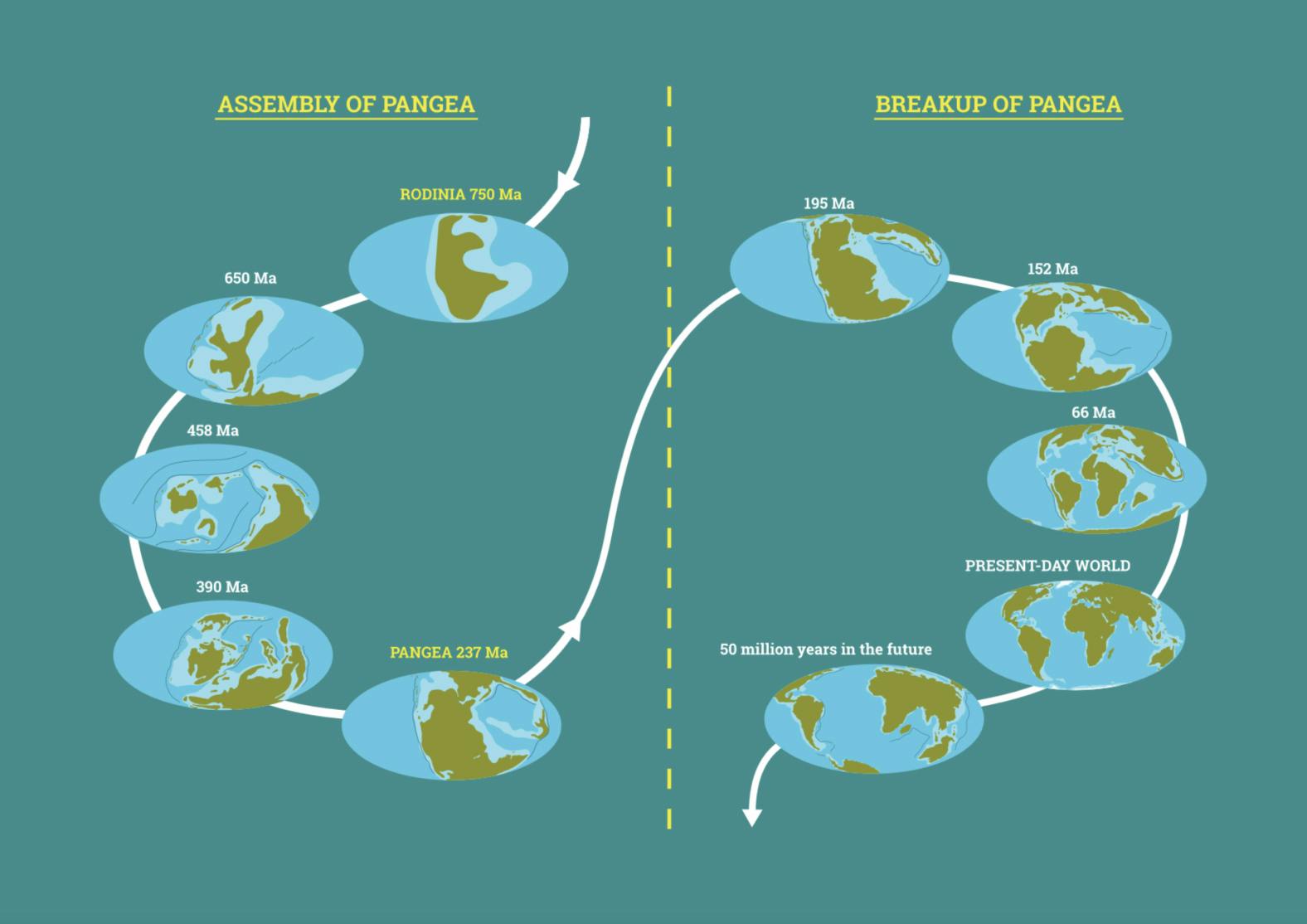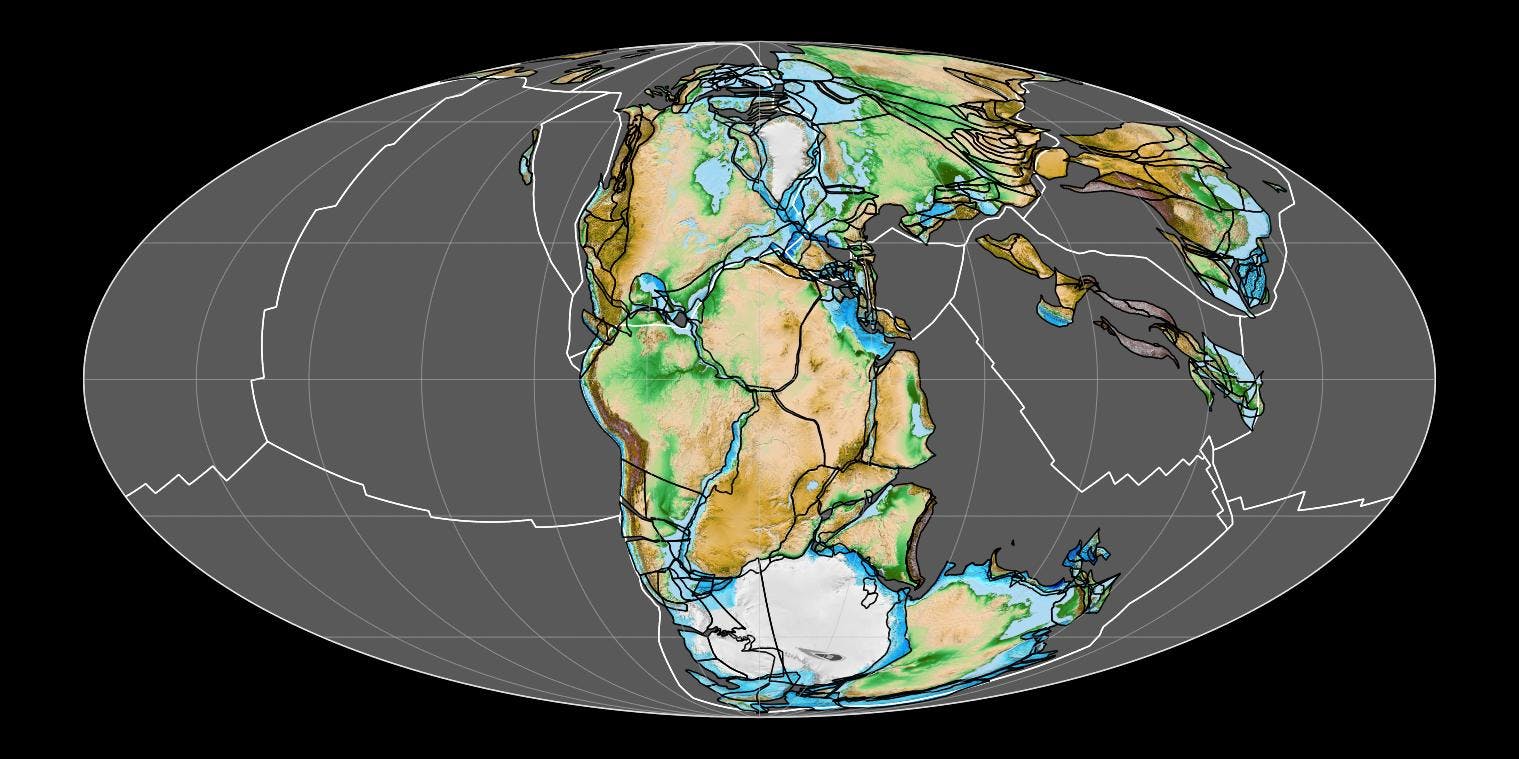About 250 million years ago, all continents were assembled as a single supercontinent, known as Pangea. Over time, the continents moved into the positions they have today.
The earth’s surface is like a puzzle of tectonic plates. The movements of continental and oceanic plates shape the landscape—generating volcanoes, earthquakes, mountains, and basins along plate boundaries.
Did you know?
Landmasses—or in other words, continents—are very ancient features of our planet, dating back as long as ~4 billion years. Oceans in comparison are very young; the oldest ocean rocks date back to ~200 million years. Oceanic crust is constantly created at mid-ocean ridges and consumed in subduction zones, whereas continents remain buoyant on the earth’s surface.
It is believed that throughout the history of our planet, continents have cyclically amalgamated to form supercontinents and then drifted apart.
Sea level has been the highest in the history of our planet; at a time when continents have just started drifting apart and ocean basins are already quite shallow.
Continents are surrounded by continental platforms made of parts of the underwater continental blocs that are created by oceanic erosion. When solving the “continents puzzle”, it is the edge of the continental platforms that match each other, rather than the limits of the continents above sea level.

Throughout the history of our planet, continents have roamed over the surface of our planet, sometimes amalgamating together to form supercontinents, sometimes drifting apart. Rodinia was a Neoproterozoic supercontinent that assembled 1.1-0.9 billion years ago and broke up 750-633 million years ago. Land masses came back together about 250 million years ago, forming the supercontinent Pangea. Over time, the continents have moved into the positions they have today, yet they continue to move with respect to one another.
The earth’s surface is like a puzzle of tectonic plates. The movements of continental and oceanic plates shape the landscape—generating volcanoes, earthquakes, mountains, and basins along plate boundaries.

About 200 million years ago, continents came together to form the supercontinent Pangaea. From then until today, continents have been slowly drifting apart. Even at their current position, they continue to move.
Continue Exploring
Video of Plate Tectonics, from 540Ma to the Modern World (Scotese Animation)
A Plate Tectonic Puzzle , by the American Museum of Natural History
Pangea Breakup and Continental Drift, Physical Puzzle, by Tanya Atwater, UCSB
Bibliography
Grotzinger, J. & Jordan, T. H. (2020). Understanding Earth, 8th ed. MacMillan.